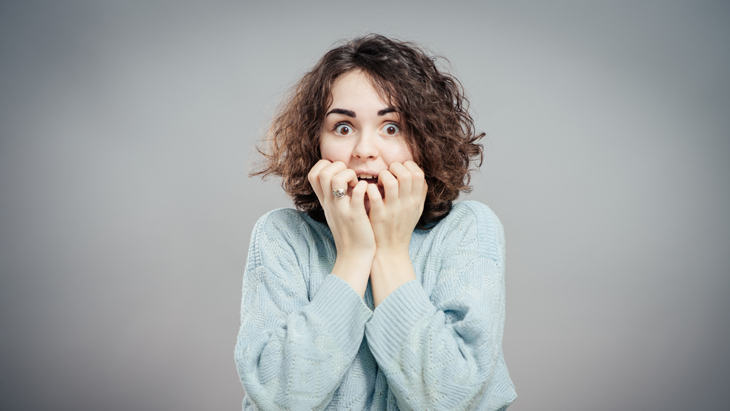We are born with only two emotions – love and fear – and only two fears – falling and loud noises.
According to the American Psychiatric Association’s Diagnostic and Statistical Manual of Mental Disorders IV, Anxiety Disorders are the major epidemic of our times.
Anxiety Disorders include:
- Panic Attack
- Phobia Disorder
- Obsessive-Compulsive Disorder
- Post Traumatic Stress Disorder
- Acute Stress Disorder
- Generalized Anxiety Disorder
- Anxiety Due to a General Medical Condition
- Substance-Induced Anxiety Disorder (medications, abusive drugs, toxin exposures)
What is a phobia?
The classical definition of a Phobic Disorder is:
…irrational, persistent fear of or an excessive avoidance of a specific object, some particular activity or situation.
Behavioral scientist B.F. Skinner, the founder of behaviorism, defines phobias as superstitions.
Any behavior that does not lead to the predetermined goal with the fewest number of actions is called superstitious behavior.
The American Psychiatric Association subdivides Phobic Disorders into the following three types:
- Agoraphobia. Fear of and avoidance of open spaces (the most common and severe of phobias).
- Social Phobia. Fear of and avoidance of embarrassment or ridicule in social situations.
- Simple Phobia. Fear of and avoidance of specific objects, situations or activities.
There are also Life Cycle Phobias, such as:
- Childhood phobias
- Having, raising or losing children
- Starting or completing school
- Puberty
- Dating, Marriage or Divorce
- Going to work
- Growing old
- Senility
- Disease, Dying and Death
Symptoms for all types of phobias range from mild anxiety and a sense of impending doom to full-blown panic attacks.
At the Stress Management Center/Phobia Institute, the definition of a phobia has been defined and expanded further:
…any behavior or feeling that is unacceptable and uncomfortable resulting from conscious or unconscious pictures of the past or projected pictures of the future… or… any thoughts or actions that result in debilitating behavior and decreased optimum performance.
Fear from threat of losing security, self-esteem, companionship, food, shelter, sex, and power are the most predominant of all fears.
The infamous “seven cardinal sins” illustrate these fears well:
- Pride is the fear of losing self-esteem.
- Greed is the fear of losing money.
- Gluttony and envy are the fears of not achieving our ambitions – the fear of failure.
- Lust is the fear of not being sexually adequate.
- Sloth is the fear of being incapable – again, the fear of failure.
- LACK OF FAITH IS ALSO A FEAR.
All these phobias are blockades, barriers to experiencing a good life and so-called miracles. They seem overwhelming and hopefully, to most, humbling. However, remember that “humility” means you are ready to learn, that you are teachable.
Signposts of Fear and Stress
It is important to note that stress and fear are exactly the same thing physiologically. The physical, mental, emotional, social and work-related symptoms of fear and stress can cause an immune system breakdown.
As with any symptoms of phobias, the symptoms can range from a mild anxiety or a sense of impending doom to full-blown phobias with associated panic attacks. Hyperventilation, palpitations of the heart, sweaty palms, and fear of losing control or going crazy are some of the more common symptoms.
The three causes of phobias are identical to the three ways we learn – trauma, repetition, and modeling (conscious and unconscious).
Many controversial theories regarding phobias only add to the stress:
- Phobias ARE NOT related to self-esteem, age, sex, race, or social or economic status.
- Fear and phobias ARE addictions. All phobics lose control of their mind and feelings (they DO NOT lose their mind). They suffer the same as if experiencing cocaine intoxication.
- Post traumatic stress disorders, phobias and panic attacks ARE all triggered in just the same way.
Current fears and phobias can run the gamut and cover all subjects:
- Tropophobia is the fear of change or moving.
- Catastrophobia is the fear of natural and man-made disasters.
- Technophobia or Computorophobia is the fear of technology and computers.
- Nosophobia or Pathophobia is the fear of disease.
- Microchemophobia is the fear of toxicity in air, water and food.
- Phobophobia is the particularly crippling fear of fear.
- Kakorraphiaphobia is the fear of failure.
- Katagelophobia is the fear of ridicule.
- Decidophobia is the fear of making decisions.
- Halophobia is the fear of speaking.
- Harpaxophobia is the fear of robbers.
- Arachibutyrophobia is the fear of peanut butter sticking to the roof of your mouth.
- Giraffeophobia is the fear of sticking your neck out.
If you suffer from excessive fear of a specific object or situation, you can visit the store, call the Stress Management Center/Phobia Institute at (828) 258-1311, or send an e-mail to Dr. Dossey.
An expert professional is an expert with disaster, trauma, phobia and stress. An expert professional can quickly and safely determine your needs, tell you specifically what they’re going to do and how long it will take.





Comments